Alex has been visiting the Red Sea in early summer almost every year since 1998, when he joined the BBC filming trip for the Blue Planet I series. Most years he runs run back to back workshops, some years three in a row, almost always on his favourite boat MY Whirlwind of Tornado Marine Fleet, on workshops coordinated by Scuba Travel in the UK. “Whirlwind has won many awards and is perfectly set up for a group of photographers,” says Alex. “She has luxurious cabins, but more importantly she has very large communal spaces, providing enough room for everyone to bring as much camera gear as they want and it is never under foot. Moreover, I have been using Whirlwind as a base in the Red Sea for many years and the Captain and his crew, the guides and everyone at Tornado know me and my groups very well and always bend over backwards to look after our unusual demands.”
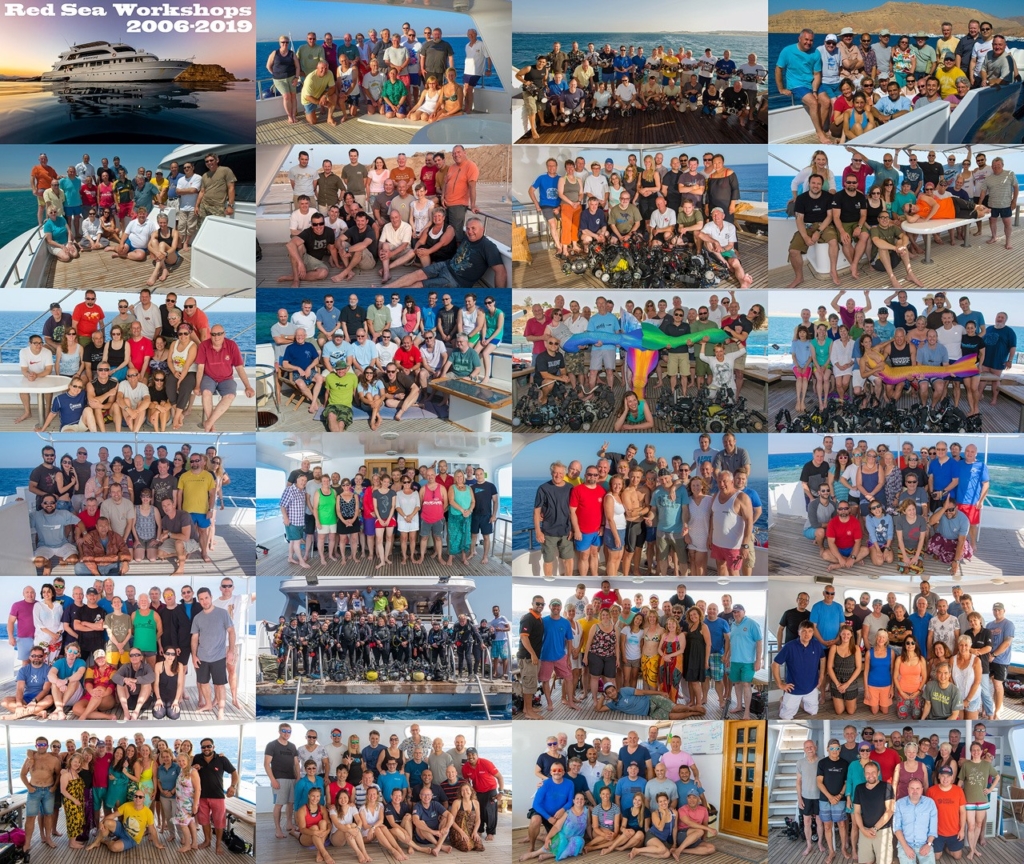
SUMMER TIMING
The June/July timing for Alex’s workshop allows the group to photograph the dramatic, seasonal schools of fish that gather in the early summer at Ras Mohammed to spawn. These include the famous bohar snappers, batfish, giant trevally, bigeye jacks, unicorn fish, barracuda, blue-line emperors, masked pufferfish and long nosed parrotfish. “RAs Mohammed is my favourite dive site in the world,” says Alex.
The wonders of Ras Mohammed are the focus for the second half of the week, while the first half concentrates on the Red Sea’s photogenic shipwrecks, usually including the Giannis D, Carnatic, Chrisoula K and Thistlegorm. Each trip is a little different, responding to sites that are hot and conditions. Tiran, Gubal and more often crop up on the itinerary. “I also have a few special spots for classic Red Sea wide angle,” adds Alex, “with the most colourful soft corals, or shallow coral for sunset splits.” That said, when the conditions are excellent at Ras Mohammed do not expect to want to move. “On most years we just dive here all day, for several days in a row,” says Alex.
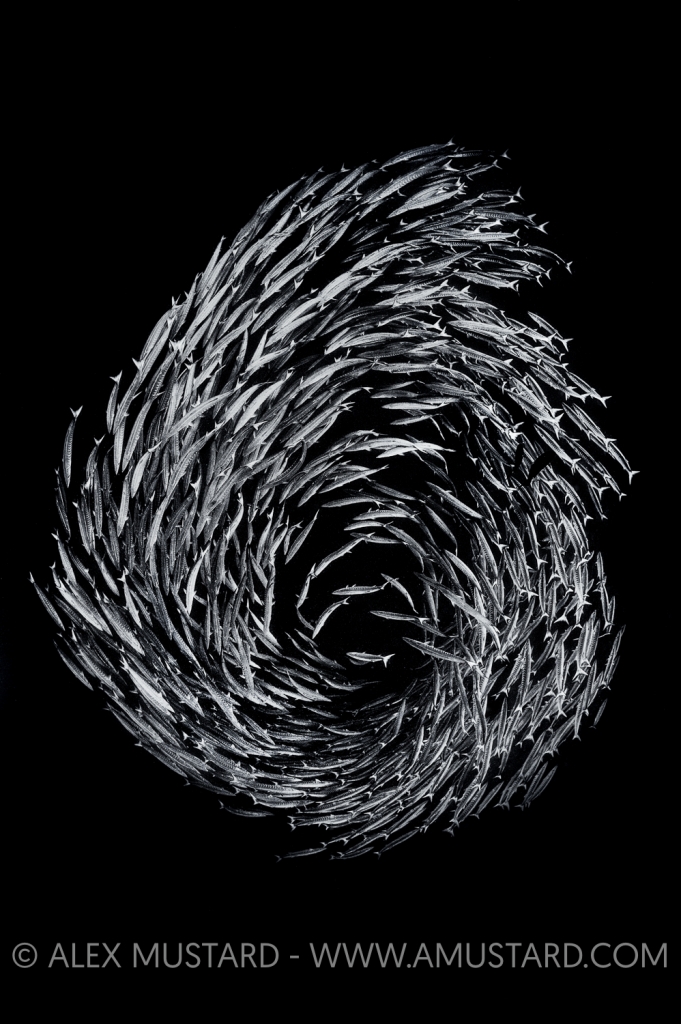
TEACHING
The teaching element of the Red Sea Workshop is themed on making the most of the photographic opportunities in the Red Sea. Lectures usually cover shooting wreck externals, wreck internals, filter photography, shooting schools and fish portraiture. “I really like this workshop because it teaches photographers how many things go into truly memorable shots,’ adds Alex “from photographic technique to knowledge of the conditions and subject matter, weather that is metal wreckage or swimming fish.”
On my Red Sea trips Alex gives the lectures during the day, between the dives, so you have ideas to try straight away. This also leaves the evenings free for group image review sessions, which provide a chance to solve problems, make plans to improve our pictures and to get inspiration for shots to try on the next day. The group size is larger than the Cayman trips (usually 19 plus Alex, although we run Whirlwind under her official capacity of 22). These trips are usually sold with flights from London or they are available without flights.
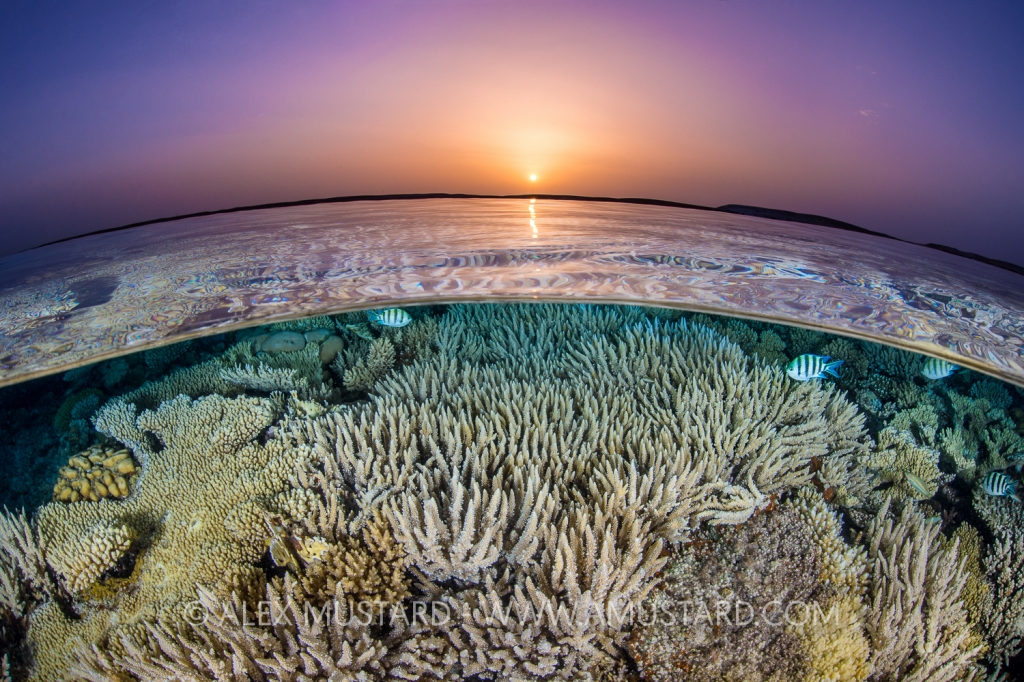
SUBJECT MATTER
The Red Sea provides guaranteed sun shine, clear water and wrecks, beautiful reefs and massive schools of fish. This is a wide angle trip. There are plenty of macro subject, but the focus of the teaching is on wide angle. Many people come to the Red Sea convinced that they don’t enjoy wreck photography and tell Alex they plan just to shoot marine life on the wrecks, which is there is abundance. But the Red Sea wrecks are different. They are all very photogenic and tend to convert even the most dedicated fish lover into a wreck photographer. “I know this because they convertered me!” says Alex.
The Giannis D is perfect for wide angle with filters. Both the stern and the, less photographed, bow provide many images, including the classic stern shots. And there is often a good chance of a lucky encounter with dolphins here and turtles feeding on red soft corals. The Carnatic and the Chrisoula K are also both excellent for photography.

Perhaps the highlight of the whole trip is the Thistlegorm, which is fantastic for wreck internal photography, and experimenting with creative techniques such as off camera strobes. Within the wreck Alex has identified all the best features for photography, artefacts that are perfectly placed for a fisheye shot with blue in the background to add depth to the frame, and down the years on the workshops we’ve given them all nicknames. Alex has also led a study to identify every vehicle in the holds of the Thistlegorm and he can draw and label the entire holds from memory.
However, the main reason for the timing of these Red Sea workshops is to catch the schooling fishat Ras Mohammed. There are many different species gathered and each has its favourite location and behaviour, which offers different photographic opportunities and also requires photographers to learn different approaches. “I know that sounds a bit vague, but I will share all my knowledge on the schools on my workshop,” says Alex.
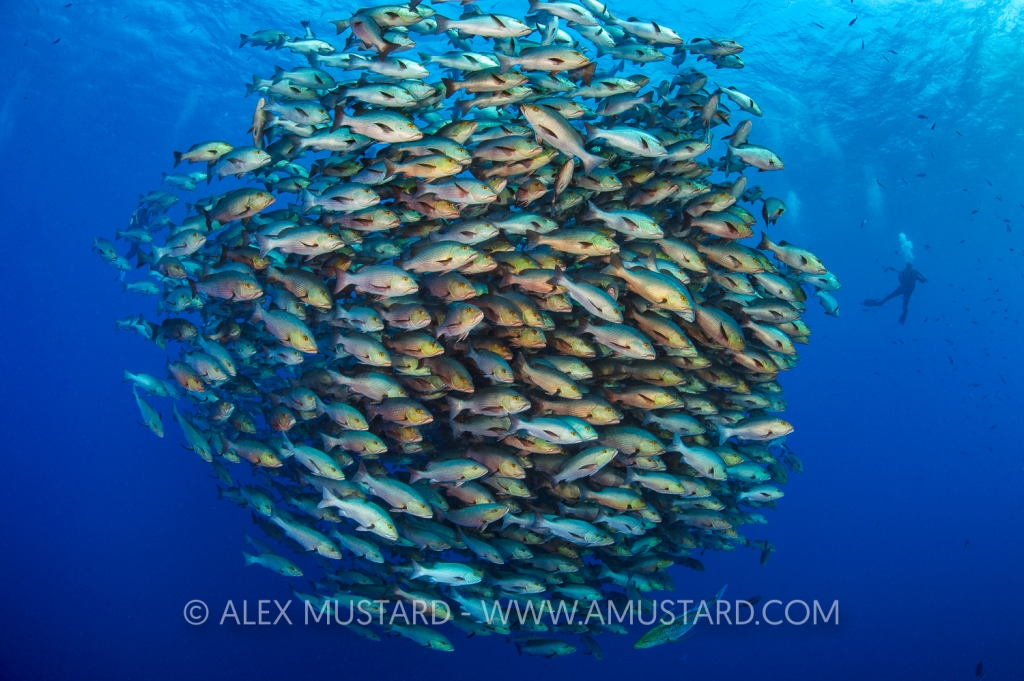
The classic Red Sea scenery is another major draw for photographers. While anthias and soft corals are found throughout the Indo-Pacifc, there is some special about the Red Sea ones. The anthias are definitely bigger and more pure orange and the corals seem a particularly vibrant red. Add to this beige fire coral and the Red Sea’s cobalt blue water and you have an almost perfect pallet of colours for stunning wide angle.
Type “Egypt” or “Red Sea” into the Stock Search Tool on this website to see the range of images that are possible.
AUTUMN WORKSHOPS
Late October and early November are the classic time for seeing oceanic whitetip sharks in the Red Sea. There is no guarantee in them showing up, but usually if they are around then they are not to difficult to photograph as long as you can dedicate your dives to the cause.
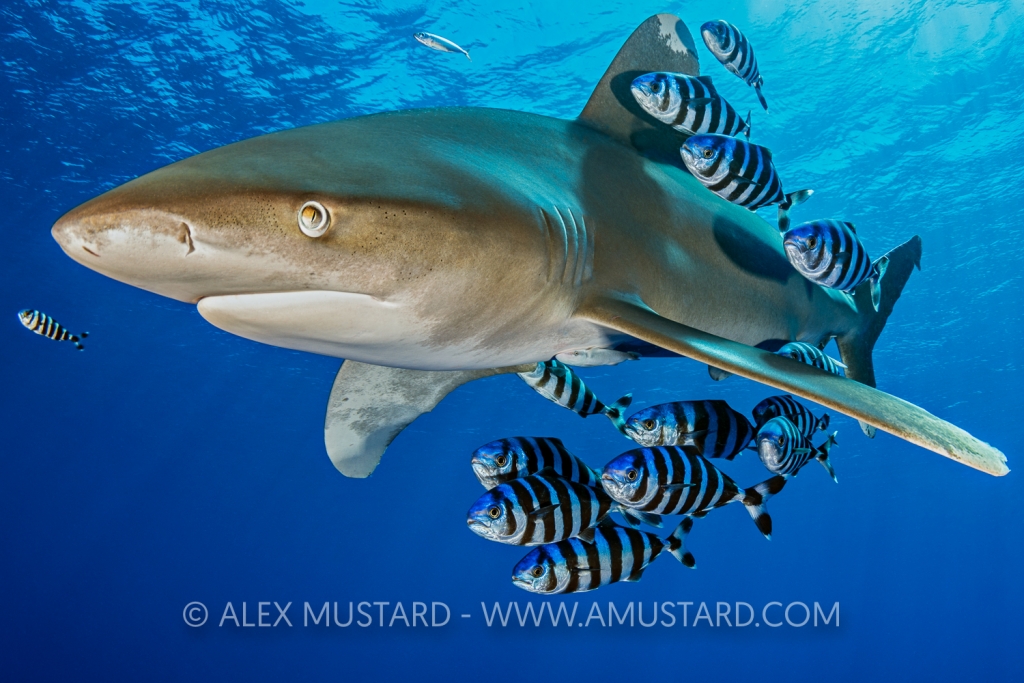
Alex also runs autumn workshops from Port Ghalib in southern Egypt: the right time and the right place for seeing them. Although this is not officially an annual workshop, Alex has been running it every year because it has just been too good. “In 2015 we dived with oceanic whitetips on 4 different reefs, clocking up 5 hours in the water with them on one day,” enthuses Alex. “Add to that scalloped hammerheads, tiger shark, silky shark, thresher shark, grey reef, and reef whitetip in one week. Oh and shot caverns, corals, anemones and hundreds of spinner dolphins. That is why I am back again in 2016.”
BOOKINGS
All Alex’s Red Sea workshops are booked with Scuba Travel.
Contact them for the dates, information, availability and bookings.
